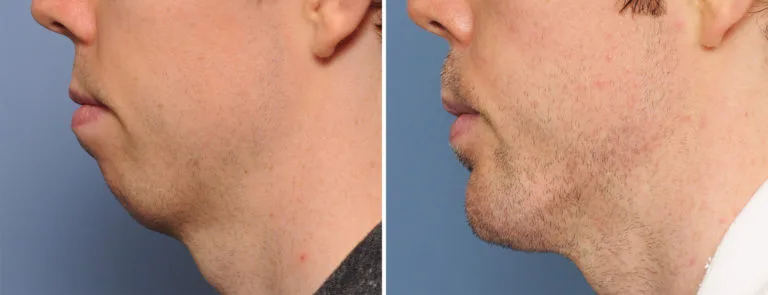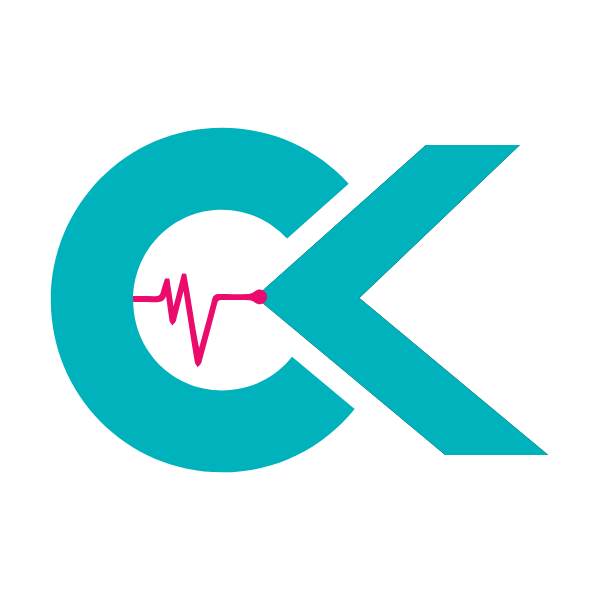The pursuit of ideal facial proportions is a common aesthetic goal, with a well-defined chin playing a pivotal role in overall facial harmony. For individuals seeking to enhance their chin profile, two primary surgical approaches offer distinct pathways to achieving desired outcomes: genioplasty and chin implant surgery. Both procedures aim to improve the projection, shape, or size of the chin, thereby balancing facial features and refining the jawline. However, they differ significantly in technique, invasiveness, types of results achievable, and recovery processes. This comprehensive guide meticulously examines each option, providing an authoritative comparison to inform your decision-making process.
Table of Contents
Understanding Chin Augmentation
Chin augmentation, broadly defined, refers to surgical procedures designed to improve the aesthetic appearance of the chin. A receding or underdeveloped chin can disrupt facial balance, making the nose appear larger or the neck less defined. By enhancing the chin, surgeons can create a more proportionate profile, improve jawline definition, and achieve a stronger, more confident look. While non-surgical options like dermal fillers exist for minor adjustments, genioplasty and chin implants represent the gold standard for permanent and significant chin enhancement.
Genioplasty: Reshaping the Bone
Genioplasty, also known as mentoplasty or sliding genioplasty, is a highly effective surgical procedure that involves repositioning the patient’s own chin bone. This method allows for significant and customized alterations to the chin’s projection, height, and width, making it particularly suitable for individuals requiring more extensive skeletal correction.
What is Genioplasty?
During a genioplasty, an incision is typically made inside the mouth, along the lower gum line, to access the chin bone. The surgeon then uses a specialized saw to make a precise horizontal cut in the jawbone. This segment of bone can then be moved forward, backward, or even vertically to achieve the desired aesthetic. The repositioned bone is secured in its new position using small titanium plates and screws, which are biocompatible and typically remain in place permanently. This bone segment then heals in its new configuration, becoming an integral part of the jaw structure.
Advantages of Genioplasty
- Natural Integration: Since genioplasty uses the patient’s own bone, the results are incredibly natural, feeling and looking like an inherent part of the facial skeleton. There is no risk of implant rejection.
- Significant and Precise Correction: This procedure offers a wider range of correctional possibilities than implants. It can address not only horizontal projection but also vertical height discrepancies and asymmetry.
- Stability: Once the bone heals, the results are exceptionally stable and permanent, as the reshaped bone becomes fully integrated.
- No Foreign Material: The absence of artificial implants eliminates concerns about implant shifting, infection, or visibility through thin skin over time.
Disadvantages of Genioplasty
- More Invasive: Genioplasty is a more complex and invasive procedure than chin implant surgery, involving bone cutting and fixation.
- Longer Recovery: Due to the nature of bone surgery, the recovery period can be more extensive, with significant swelling and discomfort in the initial weeks.
- Potential Nerve Issues: There is a slightly higher risk of temporary or, in rare cases, permanent numbness or altered sensation in the lower lip and chin area due to nerve proximity.
- Higher Cost: Generally, genioplasty tends to be more expensive than chin implant procedures due to its complexity and longer operating time.
Ideal Candidates for Genioplasty
Candidates best suited for genioplasty are those who require significant adjustments to their chin, including:
- Individuals with a severely receding chin (microgenia).
- Those with vertical height deficiencies or excesses in the chin.
- Patients with chin asymmetry.
- Individuals seeking a permanent solution without foreign materials.
- Patients with occlusal (bite) issues that may require combined jaw surgery.
Chin Implants: Adding Volume
Chin implant surgery, or alloplastic chin augmentation, involves the surgical insertion of a biocompatible material to augment the existing chin bone. This procedure is generally less invasive than genioplasty and is highly effective for patients seeking to increase chin projection or width.
What is a Chin Implant?
A chin implant is a pre-formed device, typically made from solid silicone or porous polyethylene (Medpor), that is surgically placed over the existing chin bone. The implant is designed to enhance the chin’s prominence and define the jawline. The incision can be made either under the chin (submental) or inside the mouth (intraoral). Once the implant is correctly positioned, it is secured to the bone, often with sutures or small screws, to prevent shifting. This adds volume and definition to the chin area, creating a more balanced profile.
Advantages of Chin Implants
- Less Invasive: The procedure is generally less complex and invasive compared to genioplasty, involving soft tissue dissection rather than bone cutting.
- Quicker Recovery: Patients typically experience a shorter and less arduous recovery period, with less swelling and bruising.
- Reversibility: While permanent, chin implants can be removed or replaced if a patient desires a different outcome or experiences complications, offering a degree of reversibility not possible with genioplasty.
- Cost-Effective: Often, chin implant surgery is more affordable than genioplasty.
- Predictable Results: The pre-formed nature of implants allows for highly predictable results regarding the final shape and projection.
Disadvantages of Chin Implants
- Foreign Material: The introduction of an artificial material carries a slight risk of infection, extrusion, or capsular contracture (scar tissue forming around the implant).
- Potential for Shifting: Although rare, implants can sometimes shift out of their ideal position, requiring revision surgery.
- Bone Erosion: In some long-term cases, the implant can cause gradual bone erosion underneath, though this is often asymptomatic and not clinically significant.
- Limited Customization: While various implant shapes and sizes exist, they may not offer the same level of customization for complex skeletal issues as genioplasty.
Ideal Candidates for Chin Implants
Chin implants are best suited for individuals who:
- Have a slightly to moderately receding chin.
- Desire increased chin projection or width without major skeletal repositioning.
- Are looking for a less invasive procedure with a quicker recovery.
- Prefer a more straightforward and often more affordable option for chin augmentation. Learn more about Chin Implant in Turkey and its benefits.
The Scientific Perspective: Research Insights
Recent advancements in craniofacial surgery have provided a clearer understanding of the optimal applications for both genioplasty and chin implants. A comprehensive study published in the *Journal of Oral and Maxillofacial Surgery* comparing patient satisfaction and objective cephalometric outcomes between sliding genioplasty and alloplastic chin augmentation concluded that both procedures effectively improve chin projection and facial aesthetics. However, the study noted that genioplasty demonstrated superior results for patients requiring significant vertical or horizontal bone repositioning and complex contour changes. Conversely, chin implants were highly effective for simpler augmentation needs, offering excellent patient satisfaction with a lower incidence of nerve-related complications. The research underscored the importance of thorough pre-operative assessment and patient-specific goal setting to determine the most appropriate surgical method, emphasizing that the choice heavily relies on the extent of correction needed and the patient’s existing skeletal anatomy.
Genioplasty vs. Chin Implant: A Direct Comparison
The choice between genioplasty and a chin implant hinges on a thorough understanding of their fundamental differences and how these align with individual aesthetic goals and anatomical considerations. Here is a direct comparison of key factors:
| Factor | Genioplasty | Chin Implant |
|---|---|---|
| Technique | Repositions own bone | Inserts artificial material |
| Invasiveness | More invasive (bone cutting) | Less invasive (soft tissue dissection) |
| Material | Patient’s own bone | Silicone, porous polyethylene |
| Scope of Correction | Horizontal, vertical, asymmetry | Primarily horizontal projection, some width |
| Results | Highly customizable, natural | Predictable, adds volume |
| Reversibility | Not easily reversible | Removable/Replaceable |
| Recovery Time | Longer (4-6 weeks for significant healing) | Shorter (1-2 weeks for initial recovery) |
| Potential Risks | Nerve damage, bone healing issues | Infection, shifting, bone erosion |
| Cost | Higher | Lower |
Detailed Comparison Points
- Surgical Approach: Genioplasty requires osteotomy (bone cutting) and fixation, typically performed by a maxillofacial or plastic surgeon with extensive experience in bone manipulation. Chin implant surgery involves creating a pocket for the implant, often through a smaller incision, making it a less technically demanding procedure overall.
- Results and Customization: Genioplasty allows for a truly customized approach, enabling precise adjustments to the chin’s position in multiple dimensions. This is ideal for correcting complex skeletal issues. Chin implants, while available in various sizes and shapes, primarily add volume and projection to the existing bone, offering less versatility for intricate corrections.
- Recovery and Downtime: Patients undergoing genioplasty typically experience more swelling, bruising, and discomfort for a longer period due to bone manipulation. Initial healing can take several weeks. Chin implant recovery is generally quicker, with most patients resuming normal activities within 1-2 weeks, although residual swelling may persist for longer.
- Risks and Complications: While both procedures carry general surgical risks, genioplasty has a higher potential for temporary or permanent nerve paresthesia due to the osteotomy near nerve pathways. Chin implants carry unique risks such as infection of the implant, capsular contracture, or implant malposition, which might necessitate revision surgery. However, complications for both procedures are rare when performed by experienced surgeons.
Cost Considerations: Turkey vs. United Kingdom
For international patients, particularly those from the United Kingdom, the cost of cosmetic procedures like chin augmentation is a significant factor. Medical tourism to countries like Turkey has gained immense popularity due to the combination of high-quality medical care and more competitive pricing. The cost differential for both genioplasty and chin implants between the UK and Turkey can be substantial, making Turkey an attractive option for many seeking premium aesthetic services.
| Service/Item | Turkey Price (USD) | United Kingdom Price (GBP) |
|---|---|---|
| Chin Implant | $3,500 – $5,000 | £5,000 – £8,000 |
| Genioplasty | $4,500 – $8,000 | £8,000 – £12,000 |
| Revision Chin Surgery | $5,000 – $9,000 | £9,000 – £15,000 |
| Comprehensive Chin Augmentation | $6,000 – $10,000 | £10,000 – £18,000 |
The prices listed are approximate and can vary based on the surgeon’s expertise, the complexity of the case, the specific type of implant or genioplasty technique used, and the clinic’s facilities. However, the general trend indicates a significant cost saving for procedures performed in Turkey compared to the United Kingdom, often without compromising on quality or safety standards.
The Surgical Journey
Regardless of whether you choose genioplasty or a chin implant, the journey typically follows a structured path designed to ensure safety and optimal outcomes.
Pre-operative Planning
This critical phase involves a detailed consultation with your surgeon. You will discuss your aesthetic goals, medical history, and undergo a thorough facial examination. 3D imaging and cephalometric analysis may be used to accurately assess your skeletal structure and plan the precise modifications. This is where the surgeon will recommend either genioplasty or a chin implant based on your unique anatomy and desired results. You will receive specific instructions regarding diet, medication, and preparing for surgery.
The Procedure
Both procedures are performed under general anesthesia. For genioplasty, an intraoral incision is typically used. The chin bone is cut, repositioned, and secured with plates and screws. For a chin implant, an incision is made either intraorally or externally under the chin, a pocket is created over the bone, and the implant is carefully placed and secured. The incisions are then closed with sutures. The duration of the surgery varies, with genioplasty often taking longer due to its complexity.
Post-operative Care and Recovery Timeline
Effective post-operative care is crucial for a smooth recovery and successful outcome. Your surgeon will provide specific instructions, which typically include managing swelling, pain, and diet.
1. Week 1:
- Significant swelling and bruising are common.
- Pain medication will be prescribed to manage discomfort.
- A compression garment may be worn to reduce swelling.
- A soft diet is recommended, especially for intraoral incisions.
- Avoid strenuous activities and keep your head elevated, even while sleeping.
- Oral hygiene is vital, using antiseptic mouthwash if incisions are intraoral.
2. Month 1-3:
- Most swelling will subside, revealing the new chin contour.
- You can gradually resume light activities.
- Numbness in the chin and lower lip area is normal and usually temporary, especially with genioplasty.
- Avoid contact sports or activities that could impact your chin.
- Follow-up appointments with your surgeon are essential to monitor healing.
3. Long-term:
- Final results typically become visible within 3-6 months as residual swelling completely resolves.
- Maintain good overall health and follow any specific long-term care instructions from your surgeon.
Potential Risks and Complications
While both genioplasty and chin implant surgery are generally safe procedures, it is imperative to be aware of potential risks. These can include:
- Infection: Although rare, surgical sites can become infected.
- Hematoma/Seroma: Accumulation of blood or fluid under the skin.
- Numbness or Altered Sensation: More common with genioplasty due to nerve manipulation.
- Asymmetry: Although rare, subtle asymmetries can occur.
- Scarring: While incisions are usually well-hidden, there is always a risk of visible scarring.
- Implant-Specific Risks (for Chin Implants): Implant shifting, extrusion, bone erosion, or allergic reaction.
- Genioplasty-Specific Risks: Non-union of bone, relapse of bone segment, or malposition.
Choosing a highly qualified and experienced surgeon significantly minimizes these risks.
Choosing the Right Procedure
The decision between genioplasty and a chin implant is deeply personal and should be made in close consultation with a board-certified plastic or maxillofacial surgeon. Key factors to consider include:
- Your specific anatomical needs: Is your chin deficiency mild, moderate, or severe? Do you require changes in multiple dimensions (projection, height, width)?
- Desired outcome: Are you seeking a subtle enhancement or a significant structural change?
- Tolerance for invasiveness and recovery: Are you prepared for a more involved surgical procedure and longer recovery time associated with genioplasty?
- Preference for foreign material: Are you comfortable with an implant, or do you prefer using your own bone?
- Budget: While cost should not be the sole determinant, it is a practical consideration.
Your surgeon will guide you through these considerations, utilizing their expertise to recommend the procedure that will best achieve your aesthetic goals while prioritizing your safety and well-being. For comprehensive facial aesthetic considerations, you might also explore procedures like Face & Neck Lift in Turkey.
CK Health Turkey: Your Partner in Aesthetic Excellence
For international patients, particularly those from the United Kingdom, seeking world-class aesthetic solutions, CK Health Turkey stands as a beacon of excellence. We understand the unique needs of patients traveling for medical procedures and are dedicated to providing a seamless, supportive, and superior experience from consultation through to recovery.
Our team comprises highly skilled, internationally trained surgeons specializing in a wide range of plastic surgery procedures, including both genioplasty and chin implants. We utilize state-of-the-art facilities and adhere to the highest international standards of patient care and safety. At CK Health Turkey, we prioritize personalized treatment plans, ensuring that each patient’s aesthetic goals are met with precision and artistry.
Beyond the technical aspects of surgery, we offer comprehensive support services designed to make your medical journey to Turkey comfortable and stress-free. From initial inquiry and treatment coordination to accommodation and post-operative follow-up, our dedicated patient coordinators are with you every step of the way. When considering significant medical decisions like genioplasty or chin implant surgery, it is crucial to partner with a provider that not only offers surgical expertise but also holistic patient care. Explore how we work and our commitment to your well-being by visiting How Do We Work.
If you are contemplating chin augmentation and wish to explore your options with leading experts, we invite you to contact CK Health Turkey for a consultation. Discover how we can help you achieve the harmonious facial profile you desire with confidence and exceptional care.
FAQs
What is the main difference between genioplasty and a chin implant?
Genioplasty involves surgically cutting and repositioning your own chin bone, offering highly customizable and permanent results. A chin implant involves inserting a synthetic material (like silicone) over your existing bone to add volume and projection, generally being less invasive and reversible.
Which procedure provides more natural-looking results?
Both procedures can yield natural-looking results when performed by an experienced surgeon. Genioplasty, utilizing your own bone, often integrates seamlessly, while modern chin implants are designed to mimic natural bone contours effectively.
What is the recovery time for each procedure?
Recovery from a chin implant is typically shorter, with initial healing taking 1-2 weeks. Genioplasty, being more invasive, usually requires 4-6 weeks for significant initial healing, with full resolution of swelling taking several months.
Are there visible scars from these procedures?
Incisions for both procedures are strategically placed to minimize visible scarring. Intraoral incisions (inside the mouth) leave no external scars. For chin implants, a submental incision (under the chin) is small and well-hidden in the natural crease.
Can a chin implant be removed if I don’t like the results?
Yes, a chin implant can be removed or replaced. This offers a degree of reversibility that genioplasty does not typically provide.
Is one procedure more expensive than the other?
Genioplasty is generally more expensive than chin implant surgery due to its greater complexity, longer surgical time, and the specialized expertise required for bone manipulation.
How long do the results of genioplasty and chin implants last?
Both procedures offer permanent results. Genioplasty results are lifelong as your own bone heals in its new position. Chin implants are also designed to be permanent, although they can be removed or replaced if necessary.
What should I consider when choosing a surgeon for chin augmentation?
When selecting a surgeon, prioritize board certification, extensive experience specifically in chin augmentation procedures, a strong portfolio of before-and-after photos, and clear communication regarding risks, benefits, and expected outcomes. Ensure they perform both genioplasty and chin implants to provide an unbiased recommendation.
Can these procedures correct an asymmetric chin?
Genioplasty is highly effective for correcting chin asymmetry as it allows for precise repositioning of the bone. While implants can sometimes improve minor asymmetries by adding volume, genioplasty typically offers more comprehensive correction for significant asymmetry.
What are the benefits of considering Turkey for these procedures?
Turkey offers a compelling combination of highly qualified surgeons, state-of-the-art medical facilities, and significantly more competitive pricing compared to many Western countries, including the UK. This allows patients to access premium care without the prohibitive costs.



